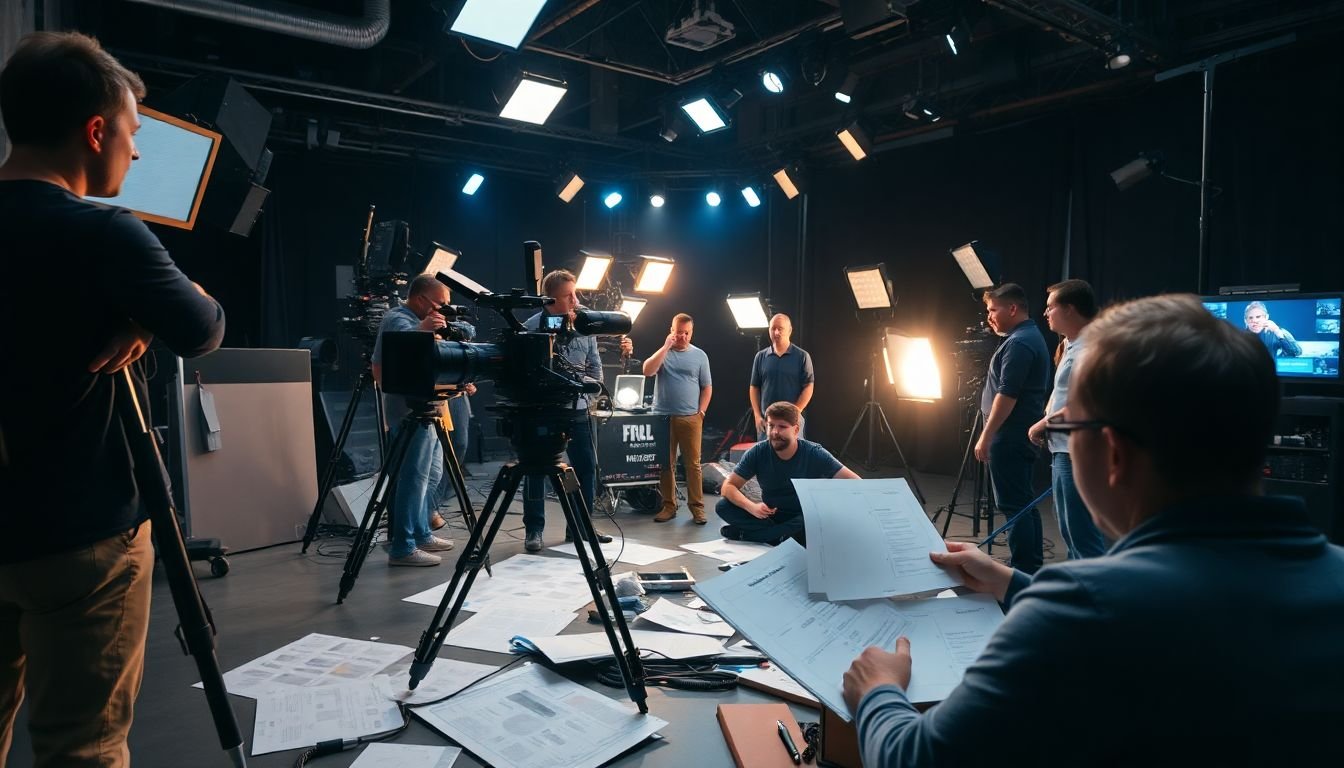
Table of Contents
Ever wondered how your favorite movies, TV shows, or even those engaging YouTube videos go from a mere idea to a captivating visual experience? Welcome to the fascinating world of video production, where creativity meets technical prowess to bring stories to life. In this comprehensive guide, we’re going to pull back the curtain on the filmmaking process, taking you on a step-by-step journey from script to screen. So, grab your popcorn and let’s dive in!
Agree with us when we say that the video production process can often seem like a mysterious black box, especially for those new to the industry. It’s a common pain point
- you have a brilliant idea, but translating that into a polished, engaging video feels like an insurmountable task. Well, we’re here to demystify that box and turn you into a content creation powerhouse!
Promise you this: by the end of this article, you’ll have a solid understanding of each stage of the video production process, from concept development to post-production. You’ll learn how to craft a compelling script, build a production team, manage a budget, and navigate the complexities of filming and editing. Whether you’re an aspiring filmmaker, a marketing professional looking to enhance your video content, or a business owner wanting to leverage the power of video, this guide is your key to unlocking the full potential of your ideas.
But first, let’s set the stage with some intriguing facts and figures. Did you know that by 2022, online videos will make up more than 82% of all consumer internet traffic? (Cisco, 2019) That’s a staggering statistic, highlighting the immense potential of video as a communication tool. Now, imagine capturing just a fraction of that audience with your own compelling content. Exciting, isn’t it? So, let’s roll the cameras and get started on your journey from script to screen!
Unveiling the Magic Behind the Lens: A Comprehensive Journey Through Video Production
Imagine stepping into a world where light dances with shadows, where stories are woven into every frame, and where magic is made, one shot at a time. Welcome to the fascinating realm of video production, a journey we’re about to embark on, from the initial spark of an idea to the final cut. Picture this: a bustling set, teeming with life, where directors, cinematographers, and grips work in harmonious chaos, each playing a crucial role in bringing a vision to life. The camera, our trusty steed, captures every moment, every emotion, every nuance, transforming them into a language that transcends words. But video production is more than just pointing and shooting. It’s about understanding light, mastering composition, and telling a story that resonates. It’s about capturing the essence of a moment, the spark in an actor’s eye, the subtle shift in a landscape. It’s about the art of storytelling, the science of technology, and the magic of creativity. So, fasten your seatbelts, dear explorer, as we delve into the intricate, captivating, and often surprising world behind the lens, where every frame is a new adventure, and every production, a masterpiece in the making.

The Spark of Creativity: Conceptualization
The journey of video production begins with a spark, a moment of inspiration that ignites the creative process. This initial stage, often referred to as conceptualization, is where ideas are born, nurtured, and shaped into a compelling narrative. It’s a phase that demands an open mind, a fertile imagination, and a collaborative spirit.
The process commences with brainstorming sessions, a dynamic exchange of ideas where no concept is too wild or too mundane. It’s a time to explore, to question, and to dream. The room is filled with ‘what ifs’ and ‘why nots’, each query a potential pathway to a unique story. The goal is not to find the perfect idea immediately, but to generate a plethora of concepts, each one a seed that could grow into something extraordinary.
Once the brainstorming session has yielded a promising idea, the next step is to develop this concept. This involves delving deeper into the story, fleshing out characters, plotlines, and themes. It’s a time to ask the tough questions: Who are we telling this story to? What do we want them to feel? What is the message we want to convey? The answers to these questions help shape the narrative, giving it a distinct voice and identity.
The culmination of this stage is the creation of a treatment, a detailed document that outlines the story, the visual style, and the tone of the video. It’s a roadmap, a blueprint that sets the tone for the entire project. A well-crafted treatment is not just a summary of the story, but a reflection of the creative vision. It’s a promise of what’s to come, a glimpse into the world that the video aims to create.
The process of conceptualization is not linear; it’s a dance of ideas, a conversation between creativity and practicality. It’s a time of great excitement and anticipation, a moment when the possibilities are endless, and the future is a blank canvas waiting to be painted. It’s the spark that ignites the flame of creativity, the first step in a journey that will culminate in a video that tells a story, evokes emotions, and leaves a lasting impact.

Crafting the Narrative: Scriptwriting
Crafting the Narrative: Scriptwriting
Scriptwriting, the blueprint of storytelling, is an art that transforms ideas into compelling narratives. It’s the backbone of any visual medium, from films to television shows, and even YouTube videos. Understanding its intricacies is key to creating engaging content that resonates with audiences.
The foundation of a strong script lies in its structure. This is where the three-act structure, popularized by screenwriter Syd Field, comes into play. It’s a roadmap that guides your story from the setup, through the confrontation, to the resolution. But remember, rules are meant to be broken. Some scripts, like ‘Pulp Fiction’, thrive on non-linear storytelling, keeping audiences on the edge of their seats.
Character development is another crucial aspect. Your characters should be as complex and intriguing as real people. They should evolve, learn, and grow throughout the story. This is achieved through their actions, dialogue, and the choices they make. Consider ‘Fleabag’, where the protagonist’s voiceovers reveal her inner thoughts, adding depth to her character.
Dialogue is the heartbeat of a script. It should be authentic, revealing character, advancing the plot, and driving the story forward. It’s not about filling pages with words, but using words to fill the screen with action. Take a cue from Aaron Sorkin’s ‘The West Wing’, where rapid-fire dialogue propels the narrative.
Visual storytelling is equally important. What’s not said is often as powerful as what is. A script should guide the reader’s eye, using stage directions to paint a picture. Consider ‘Eternal Sunshine of the Spotless Mind’, where the non-linear narrative and dreamlike sequences are integral to the storytelling.
Different scripts require different formats. Here’s a quick rundown:
- Feature Films: Follow the standard screenplay format with 55-line pages and 1.5-inch margins.
- TV Shows: Use a similar format, but include act breaks and tease out cliffhangers.
- YouTube Videos: Be concise. Use a simple, easy-to-read format, focusing on the key points.
In conclusion, scriptwriting is a blend of art and science. It’s about understanding structure, developing compelling characters, crafting authentic dialogue, and using visuals to tell your story. So, grab a pen, open a notebook, and start crafting your narrative.
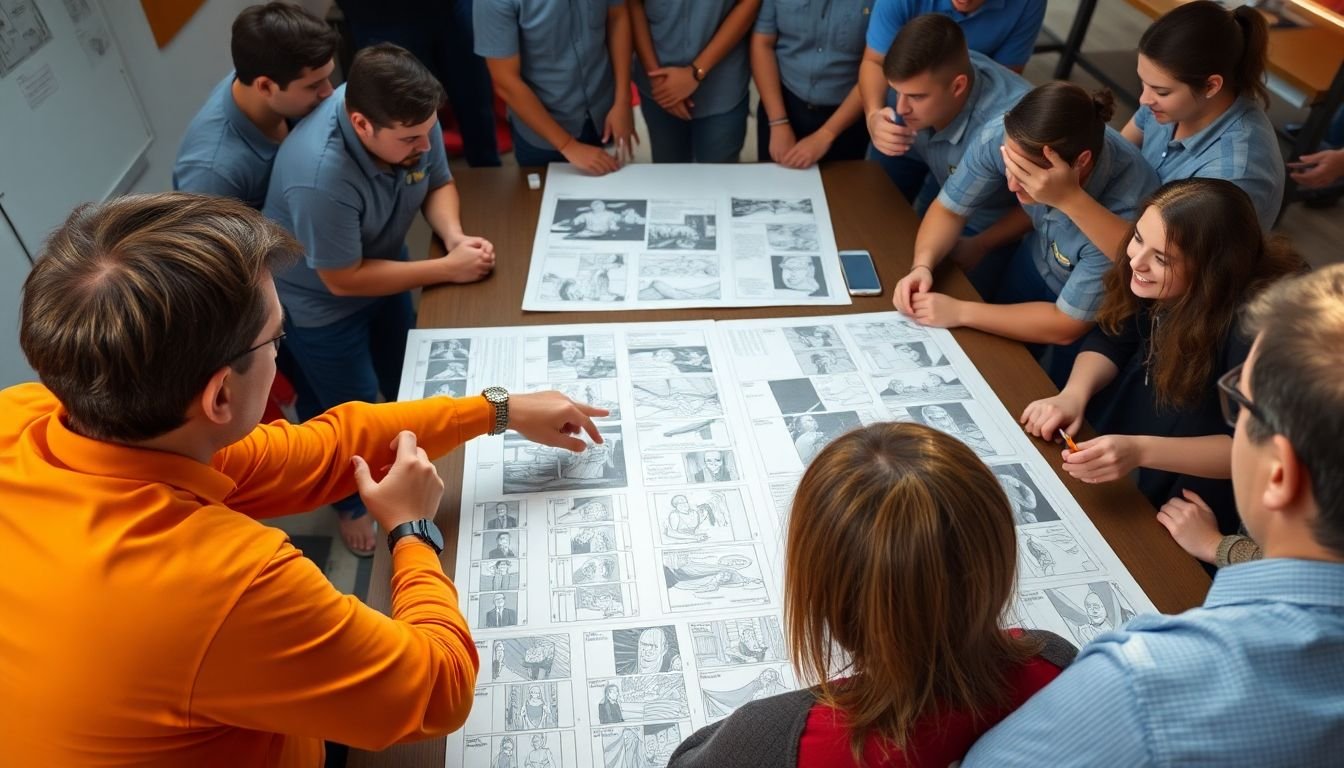
Storyboarding: Visualizing the Narrative
In the dynamic world of video production, storyboards serve as the blueprint that guides the creative process from inception to completion. They are essentially visual representations of the script, shot by shot, that help directors, cinematographers, and other crew members to visualize the narrative flow and plan the technical aspects of a video production.
The role of storyboards is multifaceted and invaluable. Firstly, they provide a clear roadmap for the director, allowing them to pre-visualize each scene, understand the pacing, and make creative decisions before stepping onto the set. By drawing out each shot, directors can identify potential issues, experiment with different angles, and ensure the story is being told effectively.
For cinematographers, storyboards are a treasure trove of information. They can study the planned shots, understand the director’s vision, and start thinking about lighting, camera movements, and composition. This preparation enables them to make informed decisions on set, saving time and ensuring the final product aligns with the intended aesthetic.
Storyboards also play a crucial role in facilitating communication and collaboration among the crew. They provide a common language that everyone can understand, from the director to the grips, ensuring everyone is on the same page. This shared vision minimizes misunderstandings and maximizes efficiency on set.
Moreover, storyboards can be used to pitch ideas to clients or stakeholders, giving them a tangible representation of what the final video will look like. They can also be used to secure approvals and sign-offs, ensuring everyone is happy with the creative direction before production begins.
In essence, storyboards are not just about drawing pictures; they are about telling a story visually, planning meticulously, and communicating effectively. They are the silent director that guides the video production process, ensuring that the final product is a true reflection of the original vision.
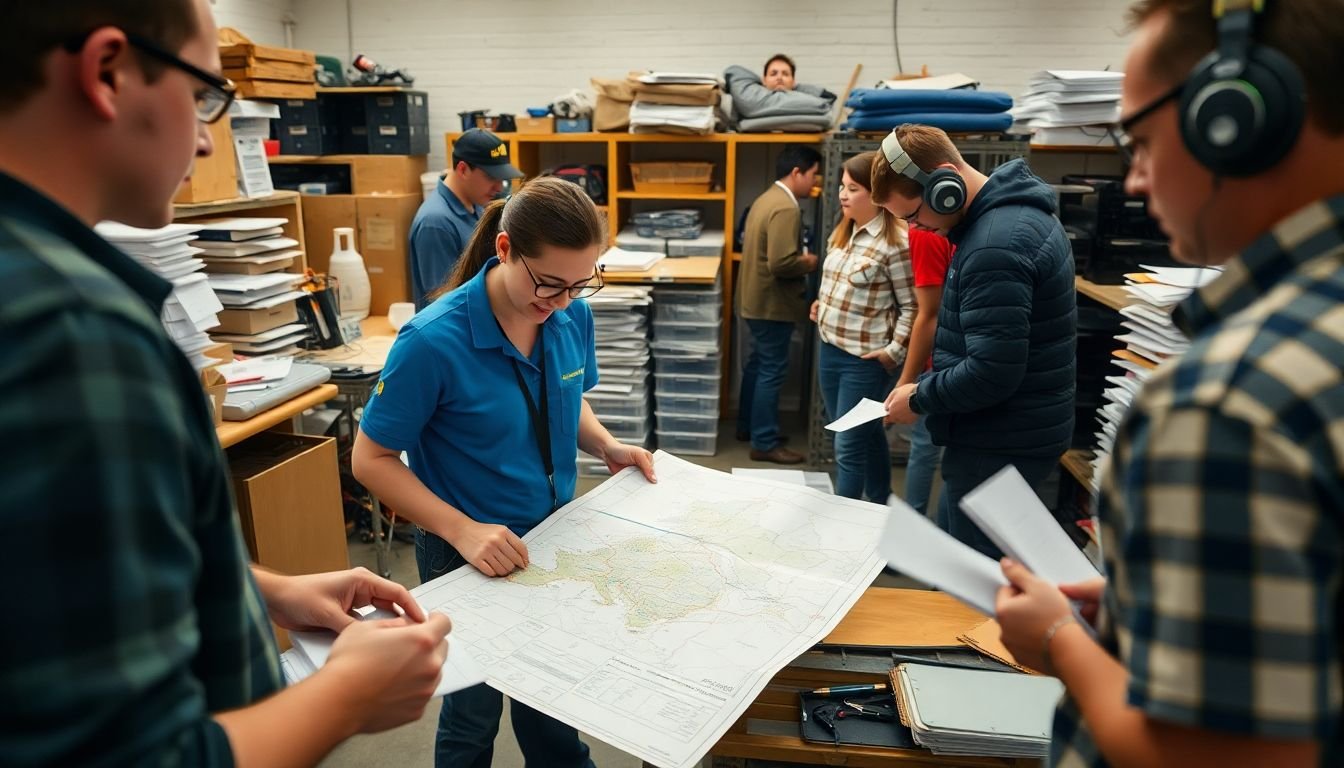
Pre-production: Planning and Preparation
Embarking on a film production journey is akin to navigating a grand expedition, and as with any successful voyage, meticulous planning and preparation are paramount. The pre-production phase, often the unsung hero of the filmmaking process, is where the groundwork is laid, ensuring a smooth and efficient production process. Let’s delve into the crucial aspects of this phase, one step at a time.
The first port of call is scheduling, the backbone of any production. This involves creating a detailed timeline that accounts for every aspect of the production, from script breakdown to post-production. It’s a complex dance of dates and deadlines, requiring a keen eye for detail and a deep understanding of the production process. A well-crafted schedule is not just a roadmap to completion, but also a tool for effective communication, keeping the entire team on the same page and moving in sync.
Next on our list is location scouting, the quest for the perfect backdrop to bring our story to life. This involves extensive research, site visits, and often, a bit of serendipity. The ideal location should not only match the vision of the director but also be practical and safe for filming. It’s a balancing act between aesthetics and logistics, and a successful scout can make all the difference in the final product.
Casting, the art of finding the right actors to embody our characters, is another critical aspect of pre-production. It’s a process that requires a keen eye for talent, a deep understanding of the script, and a bit of intuition. Auditions, callbacks, and chemistry reads are all part of the process, culminating in a cast that brings the script to life.
Lastly, gathering necessary equipment is a task that demands careful consideration. From cameras and lighting to props and wardrobe, every piece of equipment plays a crucial role in the production. It’s a matter of ensuring that the right tools are in the right hands at the right time, a logistical puzzle that requires careful planning and coordination. The goal is to have everything ready and in place, so that when the cameras start rolling, the production can run like a well-oiled machine.
In essence, the pre-production phase is about setting the stage for a successful production. It’s about turning a script into a reality, one meticulous step at a time. It’s the unsung hero that ensures the show runs smoothly, and the audience is left with a memorable experience.
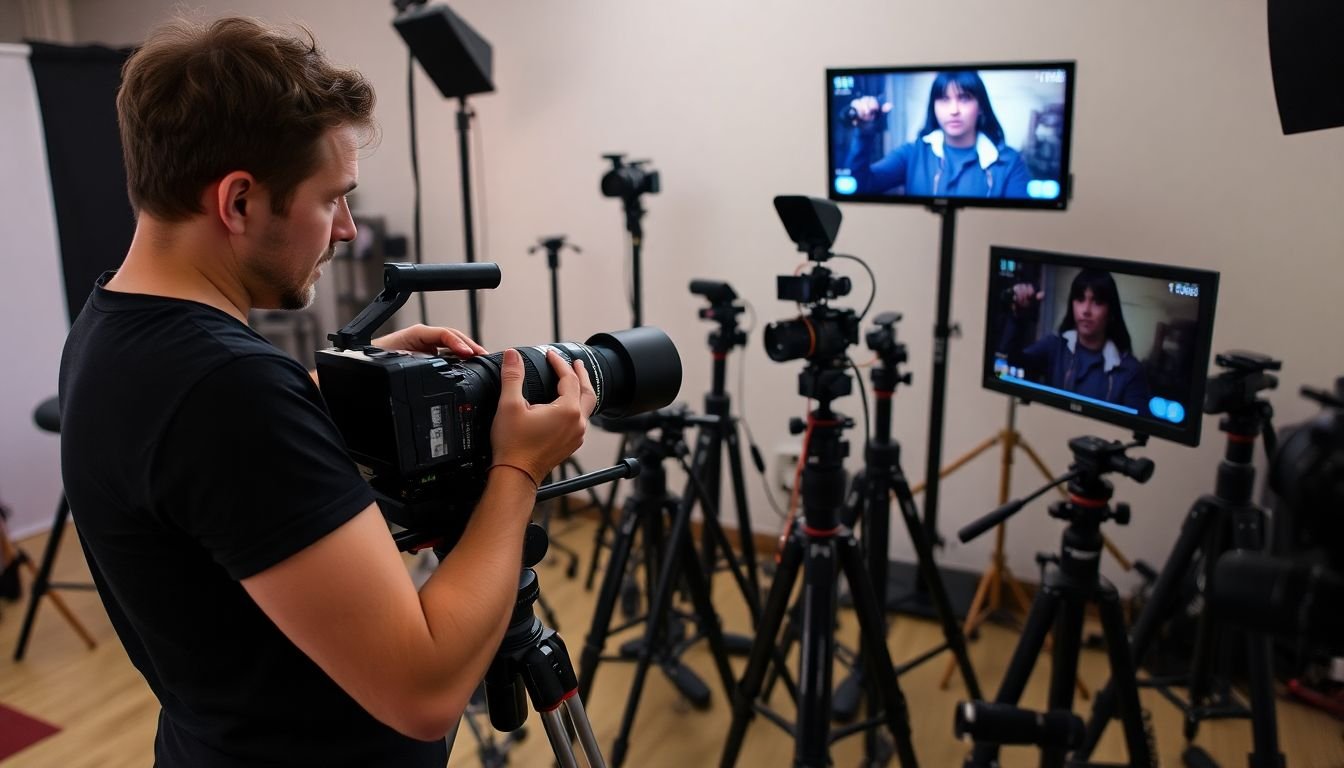
The Art of Cinematography: Choosing the Right Camera and Lenses
Embarking on the journey of cinematography, one of the first decisions you’ll encounter is the choice of camera and lenses. These tools are not merely recording devices; they are the brushes and palettes that paint the visual narrative of your film. Let’s delve into the world of cinematography, exploring the diverse landscape of camera types, lenses, and shooting techniques that contribute to a video’s unique visual style and storytelling.
The camera, the heart of your production, comes in various forms, each with its own strengths and weaknesses. The humble DSLR, like the Canon EOS 5D Mark IV or Nikon D850, offers a balance of affordability, accessibility, and high-quality video. They’re great for indie filmmakers and enthusiasts, providing shallow depth of field and excellent low-light performance. Then there’s the mirrorless camera, such as the Sony α7S III or Panasonic Lumix GH5, which combines the best of DSLRs and traditional video cameras, offering advanced features like 4K video and excellent autofocus systems.
On the other end of the spectrum, professional cinema cameras like the ARRI Alexa or RED Monstro provide unparalleled image quality, dynamic range, and professional features. They’re the workhorses of the industry, used on big-budget productions where every frame must be perfect.
But the camera is only half the story. Lenses, the eyes of your camera, are where the true artistry lies. They dictate the field of view, depth of field, and overall look of your shots. Prime lenses, like the Canon EF 50mm f/1.2L or Zeiss Loxia 35mm f/2, offer sharpness, speed, and beautiful bokeh, but lack zoom flexibility. Zoom lenses, such as the Fujinon MK 18-55mm T2.9 or Sigma 18-35mm f/1.8, provide versatility but may not offer the same level of optical quality.
Choosing the right lens depends on your shot, your story, and your style. Wide-angle lenses (like the Tokina ATX 11-16mm f/2.8) can capture vast landscapes and create a sense of depth, while telephoto lenses (such as the Nikon AF-S NIKKOR 70-200mm f/2.8E FL ED VR) compress the image, creating a more intimate, close-up feel.
Shooting techniques also play a crucial role in your visual storytelling. Steadicams, cranes, and drones can add dynamic movement to your shots, while tripods and sliders provide smooth, controlled motion. The choice is yours, and each decision should serve the story you’re telling.
In the end, the art of cinematography is not about the gear, but how you use it. It’s about understanding light, composition, and narrative. It’s about capturing the essence of a moment and translating it onto the screen. So, choose your camera, choose your lenses, and most importantly, choose your story. The world of cinematography awaits.
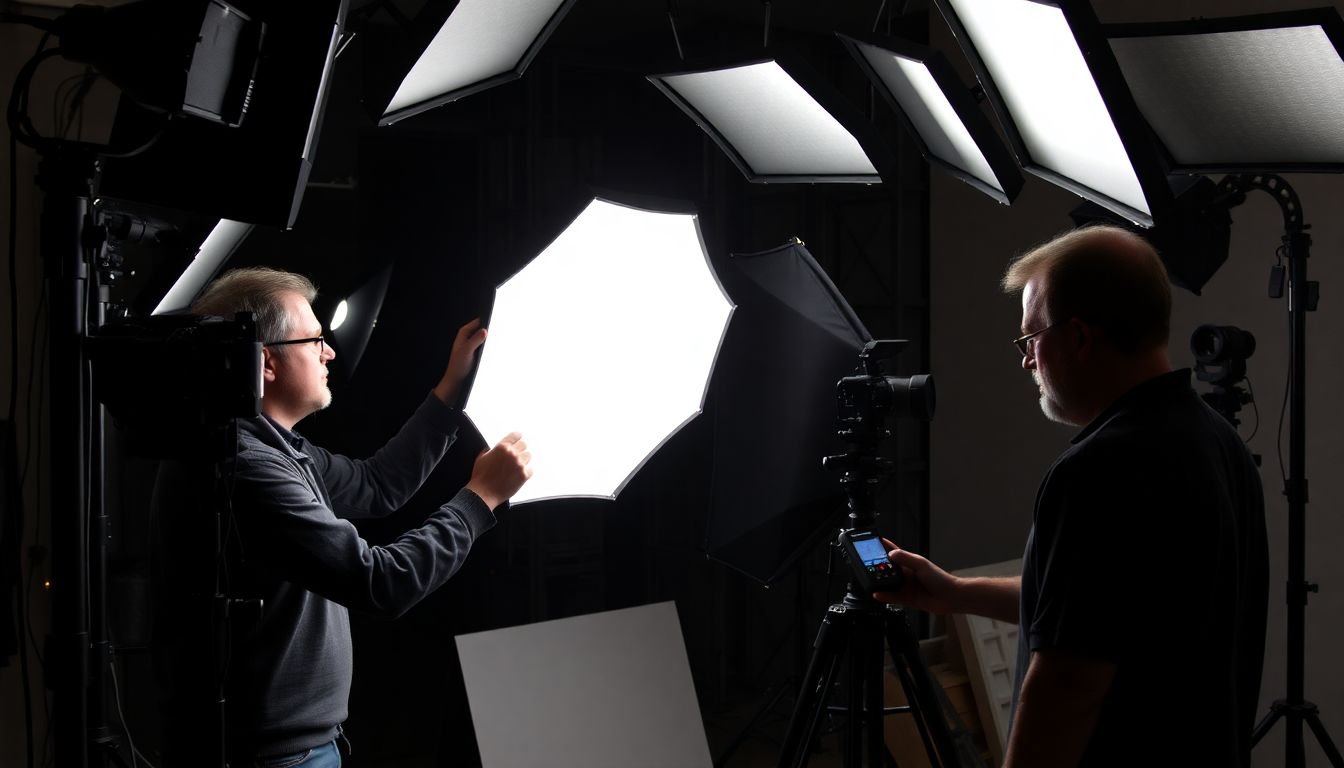
Lighting Techniques for Enhanced Visual Storytelling
Lighting, often an unsung hero in video production, plays an indispensable role in enhancing visual storytelling. It’s not just about illuminating a scene; it’s about evoking emotions, setting moods, and guiding the viewer’s eye. Let’s delve into the world of lighting techniques and explore how they can transform your videos.
Firstly, consider the three-point lighting technique, a staple in video production. This involves placing a key light (the main source), a fill light (to soften shadows), and a back light (to separate the subject from the background). This setup creates depth and dimension, drawing focus to the subject. For instance, a harsh key light with minimal fill can create a dramatic, high-contrast look, perfect for suspense or thriller scenes.
Next, let’s talk about color temperature. Lighting can range from cool (blue tones, evoking calm or sadness) to warm (orange tones, conveying happiness or nostalgia). By manipulating color temperature, you can subtly influence the audience’s emotional response. For example, a cool, blue light can create a sense of isolation or melancholy in a scene.
Equipment plays a significant role too. Softboxes, umbrellas, and diffusers help soften light, reducing harsh shadows. Reflectors can bounce light back onto a subject, increasing brightness without adding additional light sources. Meanwhile, gels can change the color of light, allowing for creative color effects.
Lastly, let’s not forget about practical lights within the scene. These can add authenticity and depth, while also serving as a storytelling tool. A flickering candle can signify tension or danger, while a warm lamp can symbolize comfort and safety.
In conclusion, lighting is a powerful tool in video production. It’s not just about what you light, but how you light it. By understanding and mastering different lighting techniques, you can elevate your visual storytelling to new heights.
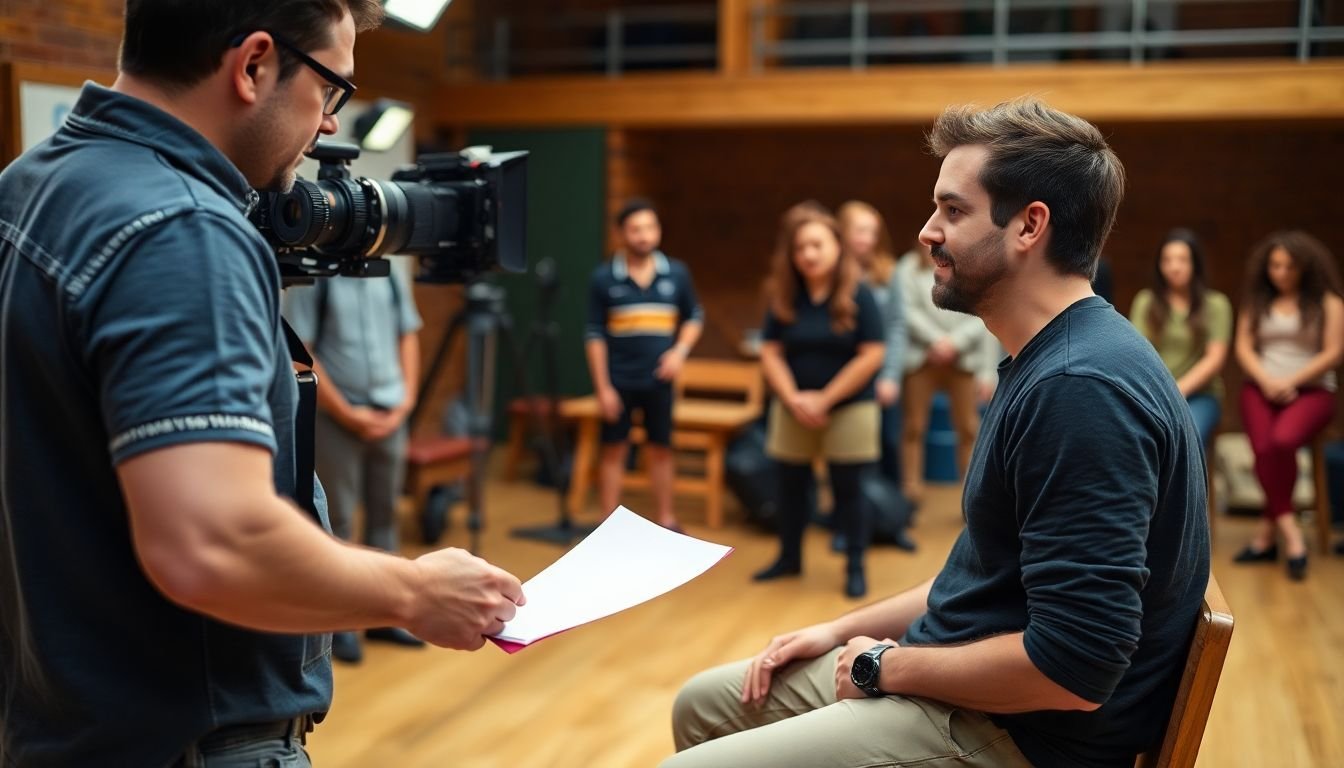
Directing and Acting: Bringing Characters to Life
In the dynamic world of theater and film, the relationship between directors and actors is akin to that of a sculptor and their clay. The director, with a vision as clear as a painter’s canvas, guides the actor, who brings the character to life with every nuance of expression and movement. Effective communication is the lifeblood of this collaboration, a dance of sorts, where the director leads and the actor follows, yet not without their own input and interpretation.
The process begins with the director sharing their vision, breaking down the script, and discussing the character’s arc, motivations, and subtext. Actors, in turn, bring their own experiences and insights, enriching the character with layers of complexity. This exchange is not a one-way street; it’s a dialogue, a back-and-forth that respects both parties’ expertise.
Rehearsals are where this collaboration truly takes flight. Directors use various techniques to help actors understand their character’s journey. They might use physical exercises to explore the character’s body language, or emotional recall to tap into the character’s feelings. Actors, meanwhile, experiment with different interpretations, seeking the director’s feedback to refine their performance. It’s a process of trial and error, of pushing boundaries and finding truth.
Capturing authentic performances is the ultimate goal. Directors create a safe space for actors to explore, encouraging them to take risks and delve deep into their character’s psyche. They use techniques like ‘actioning’
- giving actors a physical or emotional task to accomplish in a scene
- to keep performances honest and alive. Actors, on the other hand, strive to stay present and reactive, responding truthfully to their scene partners and the director’s guidance.
In essence, directing and acting is a symbiotic relationship, each role dependent on the other for the story to resonate. It’s a journey of discovery, of peeling back layers to reveal the heart of a character. And it’s this collaborative process that makes every performance unique, every story compelling.
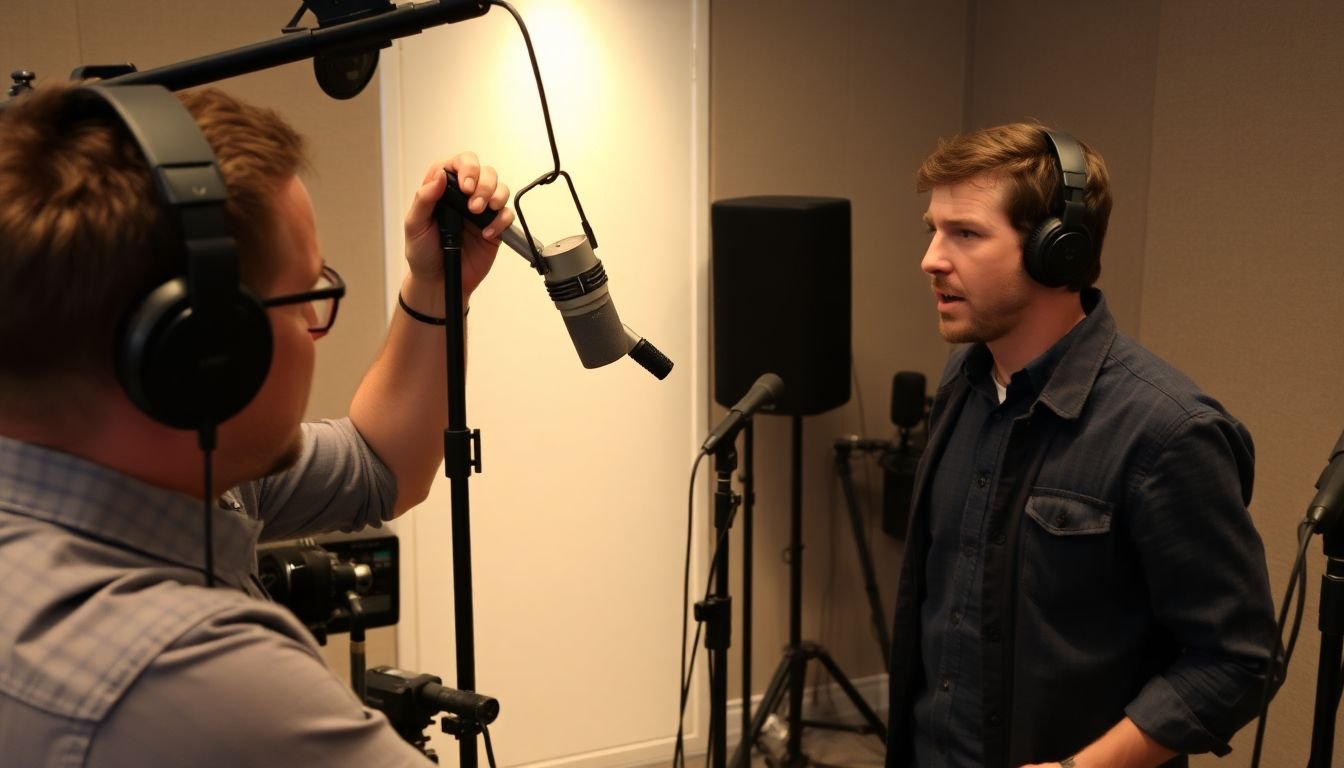
Sound Design: Capturing and Enhancing Audio
Sound design, often the unsung hero of video production, plays an indispensable role in immersing viewers in a narrative. It’s not just about capturing the world as it is, but enhancing it, shaping it to serve the story. Let’s delve into the art of sound design, exploring the tools and techniques that bring videos to life. The journey begins with capturing audio. Microphones, our ears’ extensions, come in various types, each with its unique strengths. Dynamic microphones, like the trusty SM58, are robust and great for live performances or loud environments. Condenser microphones, such as the Neumann U87, are more sensitive, capturing nuances and high frequencies, perfect for studio recordings. Shotgun microphones, like the Sennheiser MKH 416, are directional, ideal for outdoor shoots where background noise is prevalent. Recording techniques vary based on the microphone type and the scene’s requirements. For dialogue, a boom microphone is often used, suspended above the actors to capture clear, focused audio. For ambient sounds, a stereo microphone or a recorder with built-in microphones can be used to capture the atmosphere. Room tone, the natural sound of a space, is also recorded to help smooth out edits and maintain a sense of continuity. Once recorded, the audio enters the post-production phase, where sound effects, music, and dialogue are woven together to create an immersive experience. Sound effects, or foley, are added to synchronize with on-screen actions, making them feel more real. A simple footstep can become a powerful tool in the hands of a skilled sound designer, drawing the viewer deeper into the scene. Music, the language of emotions, sets the mood and pace of a video. It can heighten tension, evoke joy, or stir melancholy. The sound designer works with the composer to ensure the music complements the visuals and enhances the narrative. Dialogue, the lifeblood of many videos, is cleaned and enhanced to ensure clarity. Background noise is reduced, and the volume is balanced to ensure it’s neither too loud nor too soft. ADR (Automated Dialogue Replacement) is used when the original dialogue is poor or needs to be replaced. In conclusion, sound design is a complex, multi-faceted process that requires a deep understanding of audio and its role in storytelling. It’s not just about capturing and enhancing audio; it’s about using it to create an immersive, engaging experience that draws the viewer in and keeps them there.
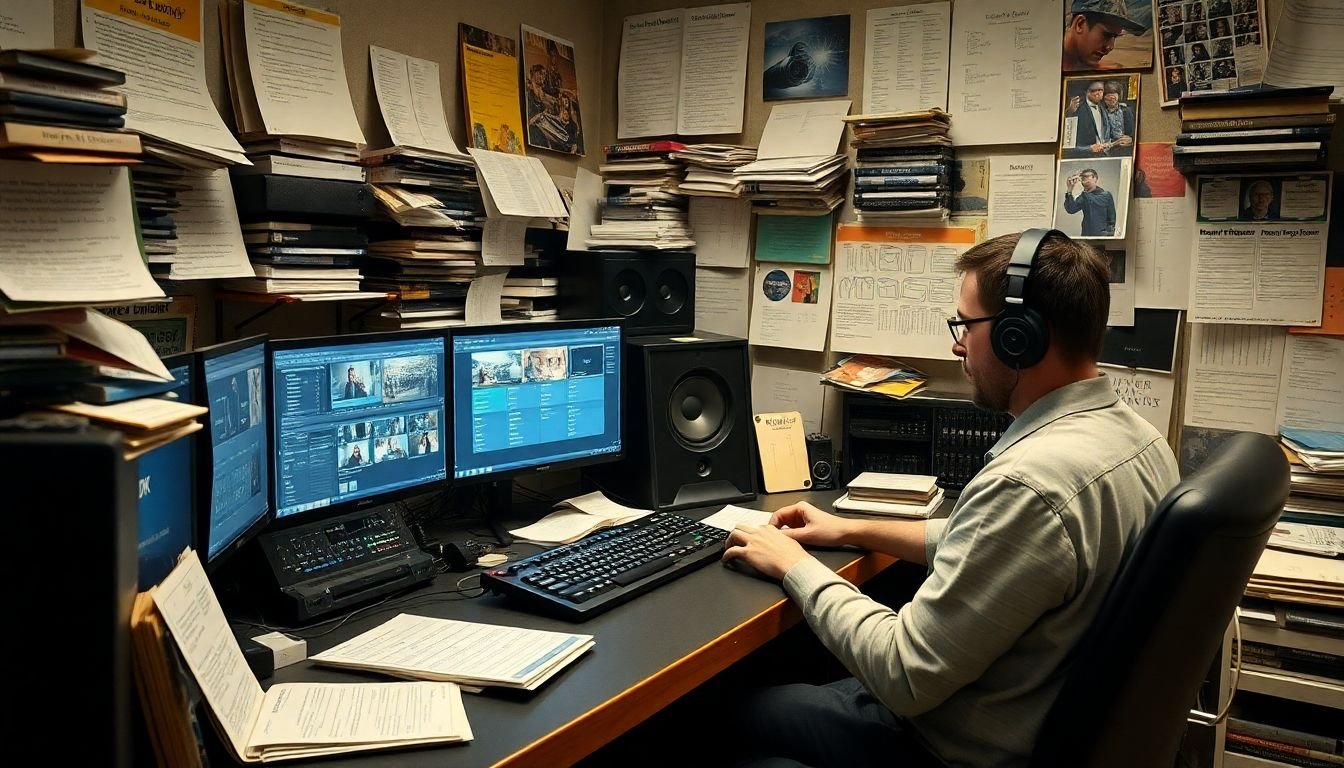
Post-production: Piecing Together the Puzzle
Post-production, the final leg of the filmmaking journey, is akin to piecing together a complex puzzle. It’s where raw footage transforms into a polished, cohesive video that captivates audiences. The process begins with editing, the most fundamental step. Here, the editor meticulously selects, trims, and arranges shots to create a seamless narrative flow. It’s like fitting together the border pieces of our puzzle, establishing the structure and foundation of our story.
Once the edit is locked, the puzzle starts to come alive with color grading. This step enhances the mood and atmosphere of the film by manipulating colors and lighting. It’s akin to filling in the puzzle pieces with vibrant hues, bringing depth and emotion to each scene.
Next, visual effects (VFX) are added, like carefully placing intricate pieces in the puzzle. VFX can range from simple fixes, like removing a boom mic from a shot, to complex creations, like generating entire digital environments. They help to realize the director’s vision, making the film more immersive and believable.
Lastly, sound mixing brings the puzzle to life, adding the final touches. This involves balancing dialogue, music, and sound effects to create an immersive audio experience. It’s like the final brushstrokes on a painting, enhancing the overall impact and drawing the viewer in.
In essence, post-production is not just about technical tweaks, but about weaving together various elements to create a harmonious whole. Each step
- editing, color grading, VFX, and sound mixing
- plays a crucial role, much like each puzzle piece contributes to the final image. When done right, the viewer is left with a captivating, cohesive video that tells a compelling story.
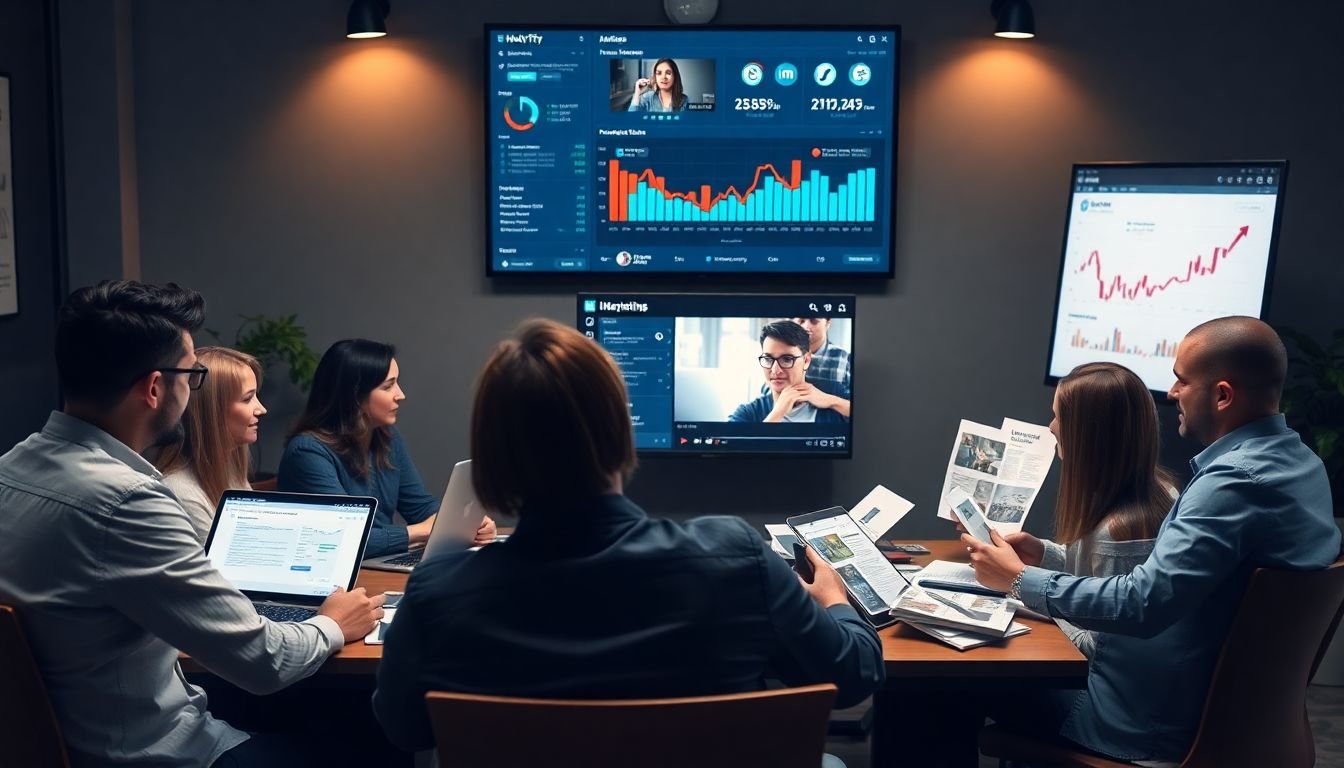
Distribution and Marketing: Sharing Your Story with the World
In the digital age, sharing your story with the world has never been more accessible or complex. Distribution and marketing of videos have evolved into a multi-faceted landscape, with numerous channels vying for your audience’s attention. Let’s delve into the various avenues and strategies to maximize your video’s reach and impact.
The digital frontier is vast, and social media platforms are its pioneers. From the visual storytelling of Instagram and TikTok to the long-form content of YouTube and Facebook, each platform offers unique opportunities to engage with your audience. To navigate this terrain effectively, consider the following steps:
- Understand your audience and choose platforms that align with their preferences.
- Optimize your content for each platform’s format and algorithm.
- Engage with your audience consistently through comments, messages, and community posts.
Film festivals, the traditional gatekeepers of cinematic storytelling, remain a powerful tool for reaching niche audiences and industry professionals. Submitting your video to relevant festivals can provide valuable exposure, feedback, and networking opportunities. To make the most of this route:
- Research festivals that cater to your video’s genre and theme.
- Prepare a compelling submission package, including a strong synopsis and trailer.
- Leverage festival screenings to build buzz and secure distribution deals.
Streaming platforms, such as Netflix, Amazon Prime, and Hulu, have democratized video distribution, allowing content creators to reach global audiences. To increase your chances of being featured on these platforms:
- Create high-quality, binge-worthy content that aligns with the platform’s curation strategy.
- Build a strong online presence and audience before pitching to streaming services.
- Consider working with a distributor who has established relationships with these platforms.
In this grand narrative of distribution and marketing, remember that every video has a unique story to tell. By understanding your audience, adapting to different platforms, and leveraging the right channels, you can share your story with the world and leave a lasting impact.
FAQ
What is the first step in the video production process?
How does scriptwriting fit into the video production process?
What happens during the pre-production phase?
- breaking down the script into manageable scenes and shots,
- creating a shooting schedule,
- scouting locations,
- casting actors,
- hiring crew members,
- securing necessary equipment and permits,
- and creating a budget.
It’s during this phase that you’ll also decide on the visual style and aesthetic of your video, which might involve creating mood boards or storyboards.
What is the role of a storyboard in video production?
What happens during the production phase?
- setting up equipment at your chosen locations,
- directing actors and crew,
- capturing footage,
- and ensuring that you get all the necessary shots to tell your story.
During this phase, it’s important to stay flexible and adaptable, as unexpected challenges can arise. However, with a well-planned pre-production phase, you’ll be better equipped to handle these challenges.
What is the post-production process?
- syncing audio and video,
- adding transitions and effects,
- color grading and correction,
- adding music and sound effects,
- and recording voiceovers or narration.
It’s during this phase that you’ll also create multiple versions of your video for different platforms, such as social media, TV, or web.
What is the role of content creation in video production?
How can I ensure my video production process runs smoothly?
- plan thoroughly during the pre-production phase,
- communicate clearly and regularly with your team,
- stay organized and keep track of all your assets,
- be flexible and adaptable to changes,
- and maintain a positive attitude, even when facing challenges.
It’s also important to have a clear understanding of your budget, timeline, and goals, and to ensure that everyone involved in the project is on the same page.
What are some common mistakes to avoid in video production?
- not having a clear concept or script,
- underestimating the time and resources needed for each phase of production,
- not testing equipment before the shoot,
- not having backup plans for unexpected challenges,
- and not involving the right people in the project.
It’s also important to avoid rushing the editing process, as this can lead to a video that doesn’t effectively convey your message or engage your audience.